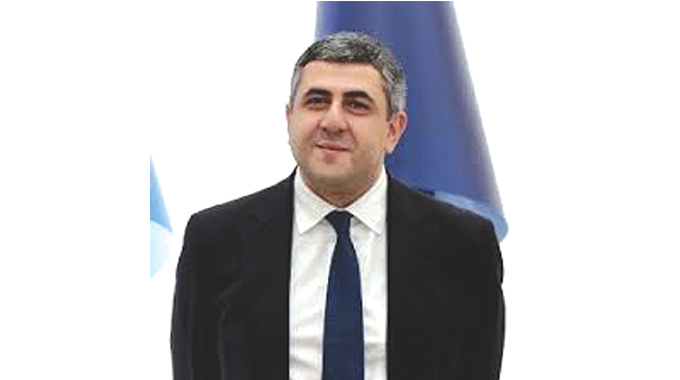Arrival at assembly point Lima: Ceasefire declared throughout the whole of Rhodesia

Pathisa Nyathi
ONE of my three latest books gives an account of the last days of the Rhodesian war. The book, a biography of Stanford Sithole (Dumisani Tembo) who operated both at Siabuwa in Binga and also in Gokwe, gives an account of his and fellow comrades’ experiences following the successful conclusion of the Lancaster House talks in London in December 1979. Stanford tells how Phebion Mutero (Ernest Moyo) visited their operational areas announcing the news that a ceasefire had been brokered. Phebion visited Gokwe and met some Zipra guerrillas operating in the area. Those who got the news were to inform the rest who did not attend the meetings, and Stanford was one of them.
It was a constitutional outcome which some guerrillas did not welcome at all. In fact, some immediately abandoned the struggle then and there. Dan Mpofu was one of them. It was time to move on to designated assembly points (APs). Stanford and groups operating at places such as Binga, Gokwe, Nkayi, Lupane and Hwange proceeded to the St Paul’s AP. St Paul’s was a Catholic primary school but, like many other schools at the time, had been closed down, hence its choice as an AP. Hundreds of Zipra guerrillas gathered there where Gilbert Khumalo (Nicholas Nkomo became Camp Commander, while Phebion Mutero was Chief of Staff. Gedi Dube, the Political Commissar and Deputy Commander of ZPRA left Lusaka to join the cadres who were assembling at St Paul’s.
The story of what transpired at the St Paul’s AP is a story for another day. In today’s article we are focusing on the experiences of Ceasefire Monitoring Force from New Zealand. It is an account of Gunner Mike Subritzky. He and his contingent under the command of Major Hewitt were bound for AP Lima at Madlambudzi, beyond Plumtree. His account does shed some light on some of Zipra’s combat tactics which Stanford’s biography also adequately deals with. Further, we get to know more about Zipra’s military attire and the weapons that they used during the liberation struggle.
What Phebion Mutero was doing for AP St Paul’s, was being done for AP Lima by Colonel Albert Zikhali. He was the Liaison Officer for Zipra and was to facilitate contacts between the monitoring force and Zipra guerrillas who were due to arrive at AP Lima. In addition to the Soviet-made AKM65 rifle, Zikhali also carried a grenade launcher and a taped magazine. His military attire displayed a GDR rice pattern as the man had trained in Cuba, East Germany and the Soviet Union. He was kitted out with a Cuban army issue baseball cap. On the chest he had Russian webbing.
“He represented everything that we had been trained to hate for the last odd years of the cold war.” “Hello comrades,” Zikhali greeted the New Zealand contingent with whom he was travelling to Madlambudzi. Mike observed that Zikhali was smoking endlessly, evidence that he was unsettled as it was not certain if these people were friend or foe. His AK assault rifle was cocked with the safety catch off. However, the peacekeepers had their weapons on “State Two,” meaning a charged magazine was on the weapon but nothing in the chamber.
The contingent proceeded on their way to Plumtree and derived solace and comfort from the fact that the road leading there was sealed, meaning there was little danger of detonating landmines. The British marines that they had travelled with from Salisbury parted ways with them as these were proceeding elsewhere where they were going to set up another AP. What Mike got to know about Plumtree was that it was famous for a boys’ boarding school.
Also accompanying the ceasefire monitoring team from New Zealand were three journalists: Ron Golden from South Africa, Allan Cowell from the United Kingdom and Matt Frajola from the United States of America. They were travelling in another Land Rover. Then the road from Plumtree was a gravel one where landmines were easier to install. The monitors had their eyes on the look-out for tell-tale signs for black plastic paper which was used by guerrillas to ensure the landmines were water proofed.
Mike seemed aware that Zipra guerrillas laid landmines at the side of a road where there was a bend. He goes on to tell that the landmines were provided with gallon cans, which were placed under the landmines.
Stanford also mentions this as having been their combat tactic. In addition to the use of petrol, they also made use of peri-peri powder.
“Under the mine they often placed a gallon can of petrol so as to give a fire flame effect. I think I said more ‘Hail Marys’ between Plumtree and Madlambudzi than I had ever said previously in my life.”
No sooner had they left Plumtree than Colonel Zikhali started yelling! “I think we are in the shit!” He repeated that twice. “Where are your crosses?” “What crosses?” asked the surprised peacekeeping members of the New Zealand force. Colonel Zikhali explained that all monitoring force vehicles were required to display white crosses on their sides. The contingent was driving through an operational area and could be ambushed by either the Zipra or Rhodesian forces. Indeed, the advice from Colonel Zikhali was heeded and the vehicles were duly emblazoned with the white crosses on their sides.
The peace monitors finally arrived at the Madlambudzi Police Camp. Mike thought the police camp looked more like a French Legion outpost than a police station. The commander was a 22-year-old Bruce Cantell who was in charge of 25 black police troopers. Members of the contingent remained behind at the camp while Major Hewitt proceeded in a Land Rover with a team on a Recce.
At the time there were neither computers nor cellphones. After writing stories, the reporters pulled out a small cage with Reuters pigeons. The stories were then clipped into a small silver container which was attached to the bird’s leg. The bird was then released and flew away to Salisbury with the newsflash that the contingent had arrived safely at AP Lima. At 16.05, after arriving at AP Lima, the group of peacekeepers hoisted the Union Jack flag on the loftiest tree around. The whole operation was, after all, a British one and Rhodesia was returning to the status of a British colony. UDI had come to an end.
In order to announce their presence, the peacekeepers tied banners to trees with the words, “Ceasefire Assembly Place.” Fires were lit and a lot of noise made that was accompanied by wild singing. Hopes were then pinned on Colonel Zikhali who was looked upon to liaise with Zipra guerrillas in the area so that they would start reporting at AP Lima. Groups of men and women drove herds of cattle to the place as a way of checking out on what was going on. They were keen to get in touch with and speak to Colonel Zikhali who they knew and from whom they were going to learn what exactly was taking place.
At 23.59 plus 1 that night, a general ceasefire was declared throughout the whole of Rhodesia.
(To be continued)










Comments